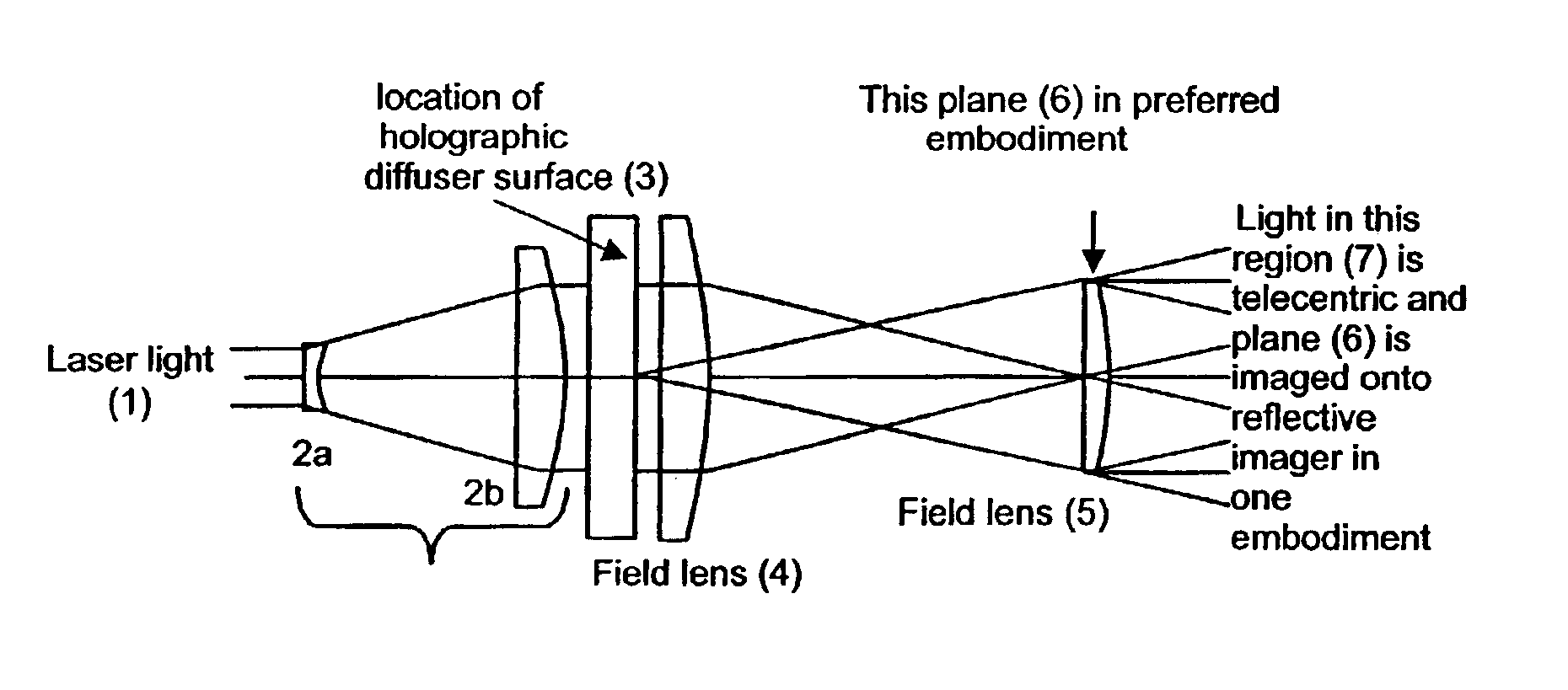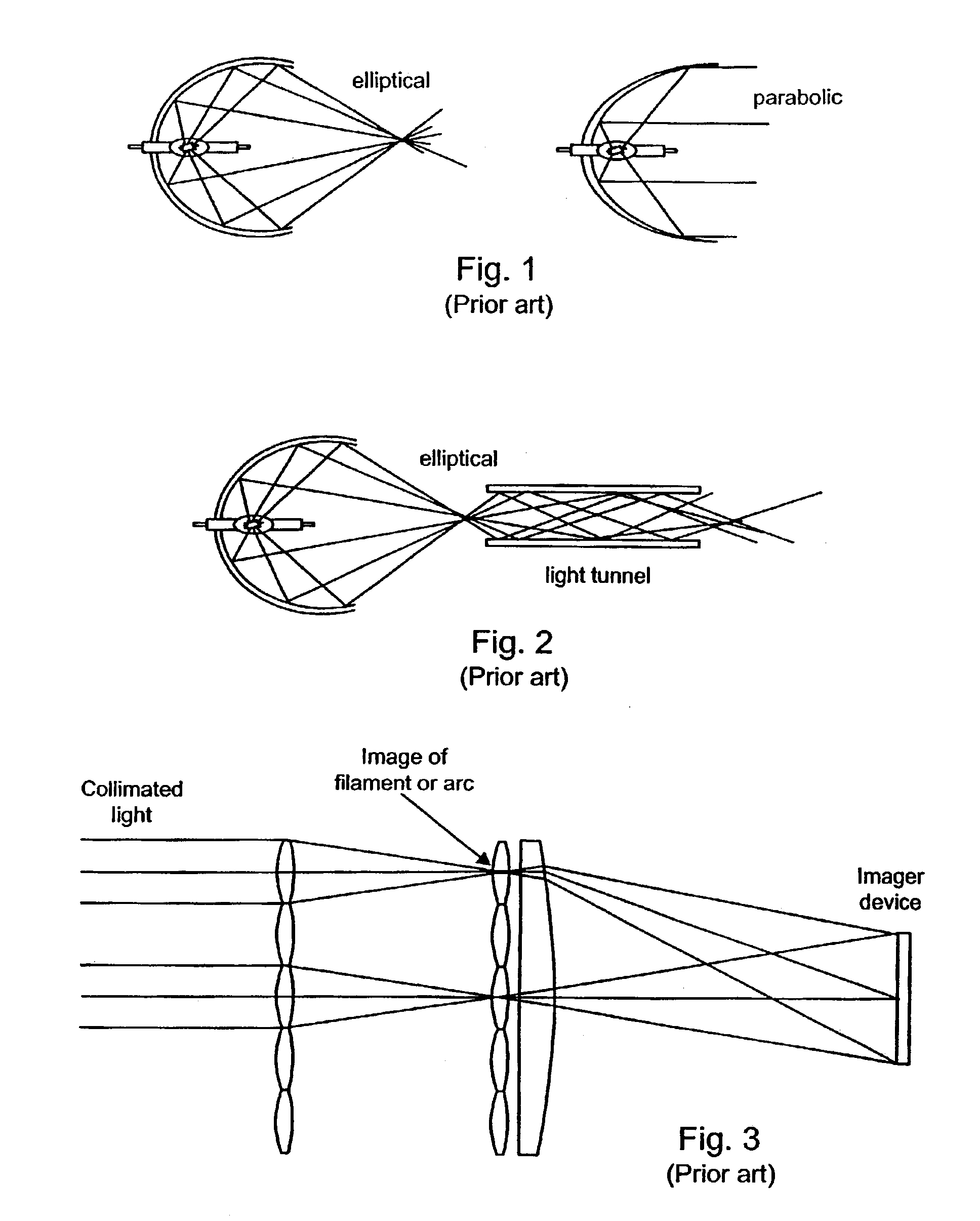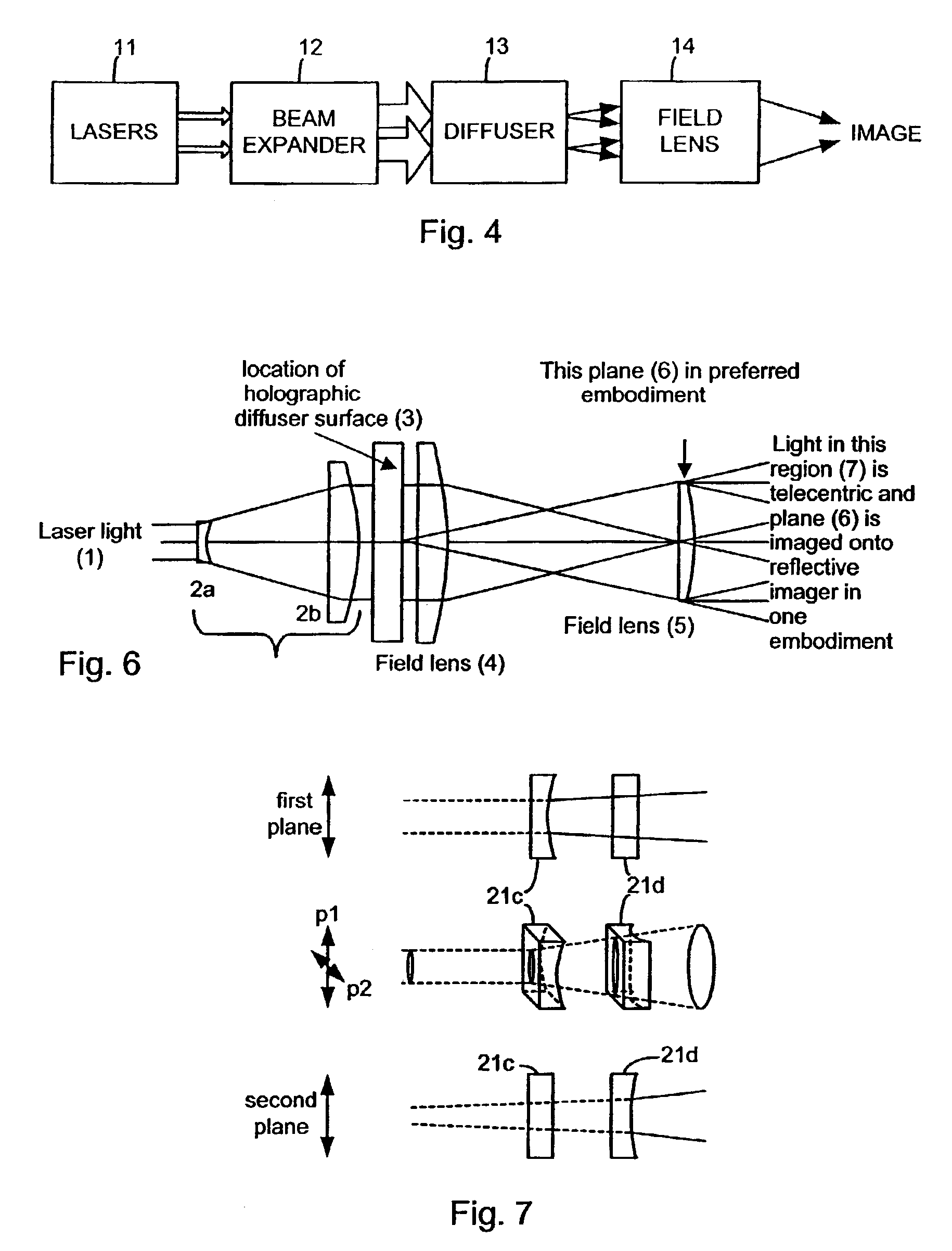Illumination device and method for laser projector
a laser projector and projection device technology, applied in the field of projection displays, can solve the problems of maximizing brightness, truncated light is obviously wasted, and achieves the effects of reducing beam sampling rate, reducing cost, and improving light efficiency
- Summary
- Abstract
- Description
- Claims
- Application Information
AI Technical Summary
Benefits of technology
Problems solved by technology
Method used
Image
Examples
Embodiment Construction
A preferred embodiment of the invention is described below. It should be noted that this and any other embodiments described below are exemplary and are intended to be illustrative of the invention rather than limiting.
In broad terms, the present invention comprises a system and method for processing a laser light beam in an optical system that uses a controlled angle diffuser to produce an image of predetermined shape and intensity.
Referring to FIG. 6, a preferred embodiment of the invention is shown. The invention comprises a laser light source 1, a beam expansion and collimating section 2, a holographic diffuser 3, a first field lens 4, and a second field lens 5. In this embodiment, all elements are coaxially centered. The function of the optical processing by the component elements is to convert the incoming substantially collimated round Gaussian laser beam to a uniform rectangular illumination plane 6 for use in illuminating a spatial light modulator such as a liquid crystal d...
PUM
| Property | Measurement | Unit |
|---|---|---|
| diameter | aaaaa | aaaaa |
| width | aaaaa | aaaaa |
| diameter | aaaaa | aaaaa |
Abstract
Description
Claims
Application Information
 Login to View More
Login to View More - R&D
- Intellectual Property
- Life Sciences
- Materials
- Tech Scout
- Unparalleled Data Quality
- Higher Quality Content
- 60% Fewer Hallucinations
Browse by: Latest US Patents, China's latest patents, Technical Efficacy Thesaurus, Application Domain, Technology Topic, Popular Technical Reports.
© 2025 PatSnap. All rights reserved.Legal|Privacy policy|Modern Slavery Act Transparency Statement|Sitemap|About US| Contact US: help@patsnap.com



